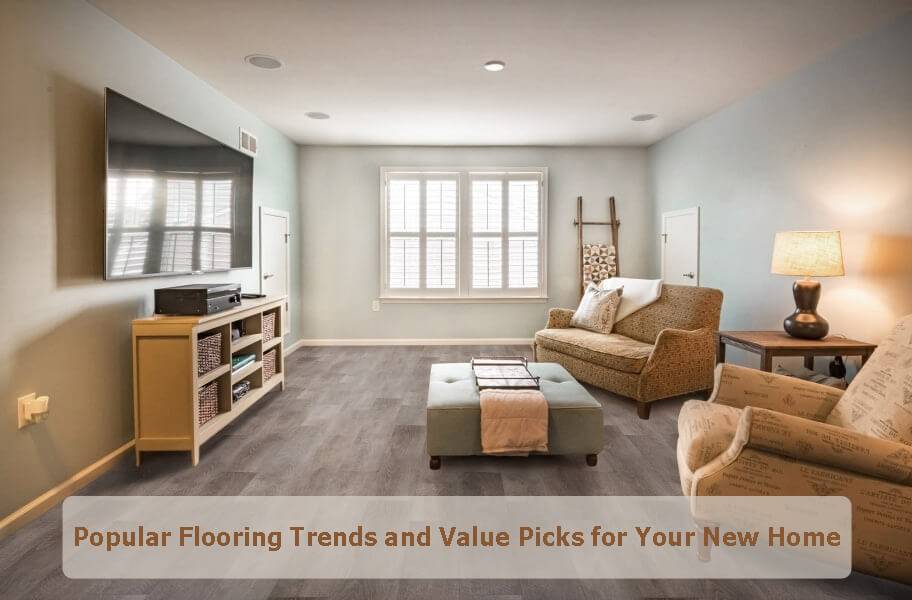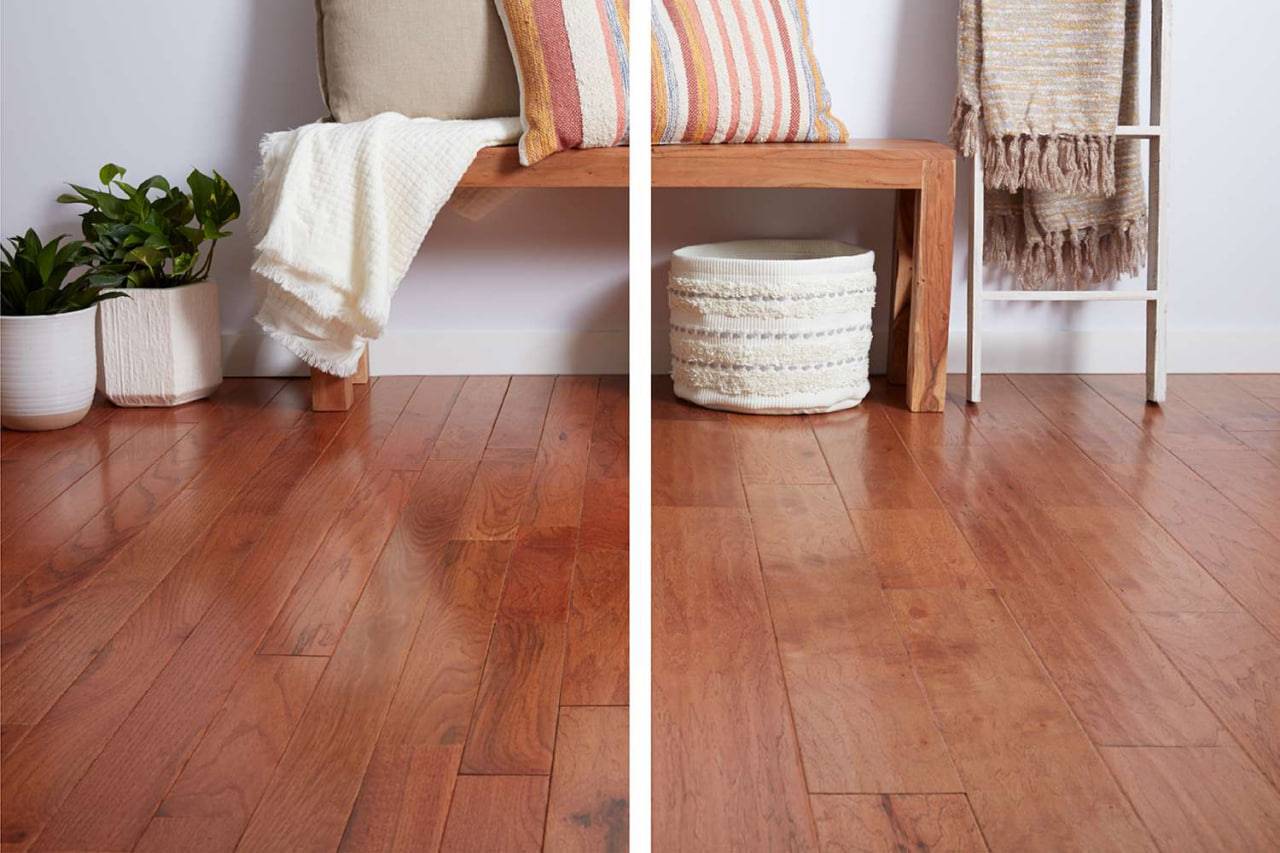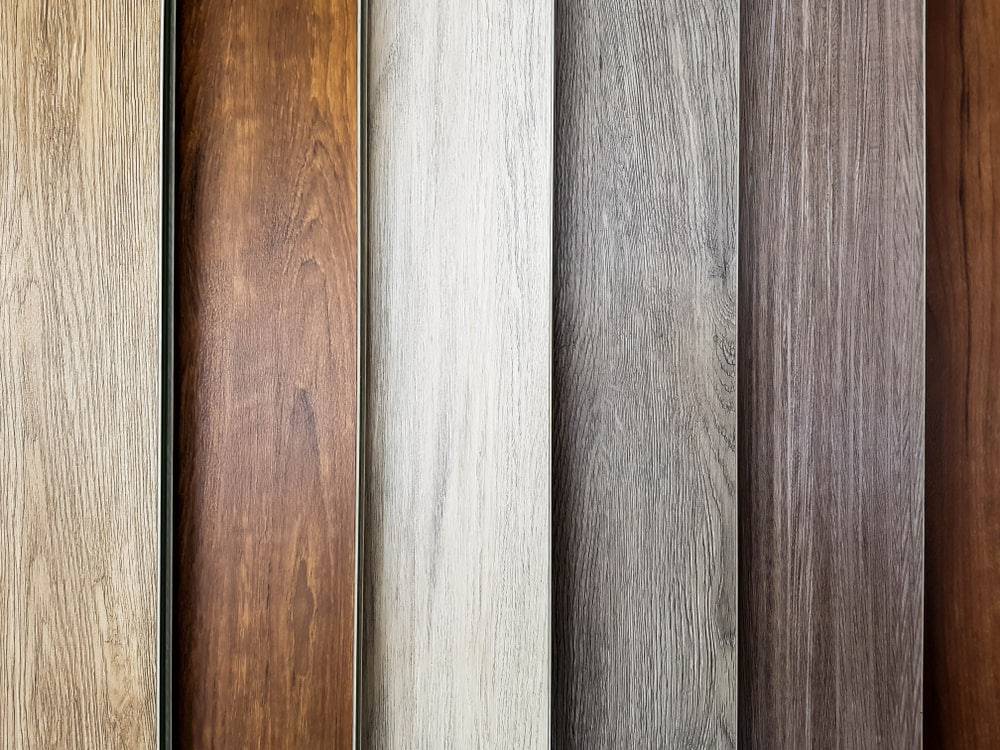Building a new home is an exciting adventure, and choosing the right flooring is a crucial step that sets the tone for your entire space. But with so many options available, navigating the world of wood, tile, vinyl, and beyond can feel overwhelming. Fear not, intrepid homeowner! This guide delves into the hottest flooring trends gracing new builds, from timeless classics to innovative materials.
We’ll unveil the top contenders, like the enduring elegance of hardwood or the versatile practicality of luxury vinyl. Along the way, we’ll uncover hidden gems – value picks that offer stunning style without breaking the bank. Whether you crave warmth and character, crave easy-care functionality, or seek an eco-conscious option, we’ve got you covered.
So, grab your virtual measuring tape and prepare to be inspired! This journey through popular flooring trends and value picks will equip you with the knowledge to confidently select the perfect foundation for your dream home. Let’s get started!
Hardwood Flooring: A Timeless Choice for Your New Home
The warm glow of sunbeams dancing on rich wood grain. The satisfying creak underfoot, whispering tales of years past. The undeniable touch of elegance that elevates any space. Yes, hardwood flooring holds an allure that transcends fleeting trends, making it a timeless choice for your new home.
But its beauty isn’t just skin-deep. Hardwood boasts unmatched durability, promising to be a cherished companion as your life unfolds within its embrace. With proper care, it can grace your home for generations, becoming a cherished heirloom that witnesses laughter, love, and countless memories.
More than just a practical choice, hardwood flooring is an investment in the heart and soul of your home. It adds instant warmth and character, effortlessly complementing diverse design styles, from rustic farmhouse to sleek modern. Its natural variations create a unique canvas, ensuring no two floors are ever the same.
But don’t be fooled into thinking hardwood is a one-trick pony. The vast array of wood species, stains, and finishes allows you to tailor the look to your exact vision. Whether you desire the classic charm of oak, the contemporary sophistication of walnut, or the light and airy feel of maple, there’s a hardwood waiting to whisper your story.
However, before you fall head over heels, it’s essential to be aware of hardwood’s nuances. While incredibly durable, it requires regular maintenance to retain its beauty. It might not be the best choice for high-moisture areas like bathrooms, and its cost can be higher than some alternatives.
But for those seeking a flooring solution that embodies lasting beauty, enduring quality, and timeless elegance, hardwood remains the unrivaled champion. As you step onto its warm embrace, remember, you’re not just choosing a floor – you’re choosing a foundation for memories that will echo through the years to come.
The Rise of Luxury Vinyl Flooring: Beauty, Brains, and Budget-Friendly Gains
Remember the dingy vinyl tiles of yesteryear? Cast those outdated notions aside, because luxury vinyl flooring (LVT) is revolutionizing the home design landscape. This innovative material is rapidly becoming a top contender, and for good reason. It boasts a winning combination of stunning aesthetics, unmatched practicality, and budget-friendly appeal, making it an irresistible choice for modern homeowners.
But what exactly is LVT, and why is it taking the design world by storm?
Unlike its humble predecessor, LVT is a sophisticated material engineered to replicate the look and feel of natural materials like hardwood, stone, and even ceramic tiles, with uncanny realism. Gone are the days of easily identifiable vinyl; today’s LVT boasts intricate textures, realistic color variations, and even subtle imperfections that mimic the beauty of nature.
But beauty is only skin-deep, right? Not with LVT!
This flooring champion goes beyond aesthetics, offering a plethora of practical benefits that make it a dream for busy households. Its exceptional durability stands up to daily wear and tear, resisting scratches, dents, and even moisture damage with ease. Cleaning is a breeze, requiring minimal maintenance to keep it looking its best. And let’s not forget the budget-friendly aspect: LVT often delivers the luxurious look and feel of more expensive materials at a fraction of the cost.
But the benefits don’t stop there! LVT is also:
- Incredibly comfortable underfoot, providing a warm and soft feel that’s perfect for barefoot living.
- Easy to install, even for DIY enthusiasts, thanks to click-lock and glue-down options.
- Environmentally friendly, with many manufacturers offering sustainable and recycled content options.
- Versatile and adaptable, suitable for a wide range of design styles, from rustic to modern and everything in between.
Ready to embrace the LVT revolution?
Whether you’re drawn to its practical advantages, budget-conscious appeal, or simply the stunning visuals, LVT offers something for everyone. So, explore the diverse styles and functionalities available, and discover how this rising star can transform your new home into a haven of beauty, comfort, and practicality.
Engineered Hardwood vs Solid Hardwood: Finding Your Perfect Fit
So you’ve decided on the timeless elegance and warmth of hardwood flooring for your new home, but now you face a new dilemma: engineered hardwood or solid hardwood? Both options offer stunning beauty and durability, but their unique characteristics cater to different needs and budgets. Let’s delve into the world of each, uncovering their strengths and weaknesses to help you find the perfect match for your vision and lifestyle.
The Stalwart Champion: Solid Hardwood
Solid hardwood flooring, as its name suggests, is crafted from a single piece of solid wood. Its unmatched durability and timeless charm have made it a beloved choice for generations. Offering a wide range of species and finishes, it adapts to diverse design styles, from rustic to modern. Additionally, solid hardwood floors can be refinished multiple times, extending their lifespan for decades.
However, this champion comes with its own set of challenges. Solid hardwood is more susceptible to moisture damage and can expand and contract with temperature changes, potentially leading to gaps or cupping. Its higher cost can also be a significant factor, and installation often requires professional expertise.
The Adaptable Contender: Engineered Hardwood
Engineered hardwood offers a modern twist on the classic. Its core is typically constructed from layers of plywood or MDF topped with a real hardwood veneer. This innovative construction makes it more stable and resistant to moisture compared to its solid counterpart, making it a suitable choice for high-moisture areas like kitchens and basements. Engineered hardwood is also generally easier to install, often coming with click-lock systems that allow for DIY projects.
While more affordable than solid hardwood, its refinishing potential is limited due to the thinner veneer layer. Additionally, some argue that its sound and feel can be slightly less “solid” compared to pure wood.
So, which contender should you choose?
It all boils down to your priorities and lifestyle.
- Craving timeless beauty and potential for multiple refinishings? Solid hardwood might be your champion.
- Prioritizing budget, moisture resistance, and ease of installation? Engineered hardwood could be your perfect match.
Ultimately, the best way to choose is to explore both options in person, feeling the texture, comparing visuals, and understanding the installation process. Remember, there’s no single “right” answer; the perfect flooring choice is the one that resonates with your needs and dreams!
Stepping into 2024: Top Flooring Trends for Your New Home
Building a new home is an exciting adventure, and choosing the right flooring sets the stage for your entire space. But with so many trends and materials swirling around, where do you even begin? Fear not, intrepid homeowner! This guide spotlights the hottest flooring trends gracing new builds in 2024:
Embrace Patterns:
- Wood takes a twist: Move over, plain planks! Herringbone, chevron, and basketweave patterns are adding visual interest to wood floors, especially in entryways and smaller areas.
- Tile gets playful: Geometric and mosaic designs are stepping into the spotlight, offering unique accents in kitchens, bathrooms, and mudrooms.
Lighten Up:
- Wood goes blonde: Lighter wood tones like white oak and honey-colored finishes are trending, creating a bright and airy feel, especially when paired with reflective materials like brass.
- Stone shines bright: Forget dark and moody, natural stone tiles are embracing lighter shades like cream and beige, offering a timeless elegance.
Nature’s Touch:
- Sustainable choices rise: Eco-conscious homeowners are increasingly seeking flooring options made from recycled materials like bamboo or cork, or opting for sustainably harvested wood.
- Stone takes center stage: Slate and other natural stone options are gaining popularity, adding a touch of organic texture and beauty to various spaces.
Practicality Reigns:
- Luxury vinyl thrives: LVT continues its reign, offering realistic wood, stone, and even ceramic tile looks with unmatched durability, water resistance, and budget-friendliness.
- Laminate gets an upgrade: Water-resistant and waterproof laminate options are making a comeback, mimicking the look of more expensive materials like hardwood at a fraction of the cost.
Remember, trends are just a starting point! Consider your lifestyle, budget, and desired aesthetic when making your final decision. Do you crave warmth and character? Explore textured wood or natural stone. Prioritize low-maintenance and practicality? Luxury vinyl or laminate might be your heroes.
Stay tuned for our upcoming articles:
- Dive deeper into specific materials like engineered hardwood vs. solid hardwood.
- Explore installation tips and maintenance secrets for popular flooring choices.
- Discover how to seamlessly blend flooring trends with your unique design vision.
With the right information and an open mind, you’ll find the perfect flooring to create a beautiful and functional foundation for your dream home!
Choosing the Perfect Foundation: Key Factors for Your New Home’s Flooring
Picking the right flooring for your new home feels like a pivotal decision, and for good reason! It sets the tone for your entire space, impacting both aesthetics and functionality. But with so many options available, from classic hardwood to innovative vinyl, navigating the world of flooring can feel overwhelming. Fear not! This guide highlights crucial factors to consider, empowering you to make an informed and confident choice:
Lifestyle and Traffic:
- High-traffic areas: Entryways, hallways, and kitchens demand durable materials like ceramic tile, luxury vinyl plank (LVP), or laminate. Consider scratch and water resistance.
- Quiet zones: Bedrooms and living areas might benefit from softer options like carpet or engineered hardwood for comfort and noise reduction.
- Moisture exposure: Bathrooms and laundry rooms require moisture-resistant materials like ceramic tile, LVP, or waterproof laminate.
Budget and Maintenance:
- Material cost: Hardwood and stone tend to be pricier, while laminate and LVP offer budget-friendly alternatives.
- Installation: Consider DIY potential for click-lock options or factor in professional installation costs.
- Maintenance: Some materials demand regular cleaning or refinishing, while others require minimal upkeep. Choose based on your time and commitment.
Aesthetics and Design:
- Desired ambience: Hardwood exudes warmth and character, while tile offers sleek sophistication. LVP provides versatility, mimicking various styles.
- Color and pattern: Lighten up spaces with blonde wood or whitewashed tiles. Embrace bold patterns or opt for timeless neutrals.
- Cohesiveness: Consider how your flooring choice complements your overall design theme and existing elements.
Additional Considerations:
- Sustainability: Explore eco-friendly options like bamboo, cork, or recycled materials.
- Underfoot comfort: Opt for warmer materials like carpet or engineered hardwood in areas where barefoot comfort matters.
- Soundproofing: If noise reduction is a concern, consider thicker materials like carpet or cork underlayment.
Navigating the Maze: Durability and Maintenance of Different Flooring Types
Choosing the right flooring for your new home or renovation feels like navigating a maze – options abound, each boasting enticing visuals and promises. But beneath the aesthetic appeal lies a crucial consideration: durability and maintenance. Different flooring types cater to diverse needs, and understanding their strengths and demands is key to making an informed decision. Let’s explore some popular contenders:
-
Hardwood:
- Durability: Renowned for its timeless elegance and exceptional durability, solid hardwood can last for generations with proper care. However, it’s susceptible to scratches, dents, and moisture damage.
- Maintenance: Regular sweeping, occasional deep cleaning, and periodic refinishing are essential. Spills require immediate attention to prevent water damage.
-
Engineered Hardwood:
- Durability: More stable than solid hardwood due to its layered construction, offering good scratch and moisture resistance. However, its lifespan pales in comparison to its solid counterpart, and refinishing options are limited.
- Maintenance: Requires less maintenance than solid hardwood, with regular sweeping and occasional deep cleaning sufficient. Spills should still be cleaned promptly.
-
Luxury Vinyl Plank (LVP):
- Durability: A rising star, LVP boasts exceptional resilience to scratches, dents, and even moisture. It’s perfect for high-traffic areas and active households.
- Maintenance: Easy to clean with regular sweeping and mopping. Highly resistant to stains and requires minimal effort to maintain its pristine look.
-
Laminate:
- Durability: Budget-friendly alternative to hardwood, offering moderate scratch and moisture resistance. However, it can be susceptible to dents and water damage with prolonged exposure.
- Maintenance: Easy to clean with sweeping and mopping. Choose water-resistant options for areas prone to spills. Avoid excessive moisture contact to prevent warping.
-
Ceramic Tile:
- Durability: Exceptionally durable and resistant to scratches, dents, and moisture. Ideal for kitchens, bathrooms, and high-traffic areas.
- Maintenance: Relatively low-maintenance, requiring regular sweeping and mopping. Grout lines might require periodic cleaning to prevent mildew growth.
-
Carpet:
- Durability: Offers comfort and noise reduction, but prone to wear and tear in high-traffic areas. Susceptible to stains and requires regular cleaning to maintain its appearance.
- Maintenance: Regular vacuuming and professional cleaning recommended depending on carpet type and traffic. Spills require immediate attention to prevent permanent stains.
Conclusion: Stepping Out of the Maze, Confidently
Choosing the right flooring for your new home may have felt like navigating a daunting maze, but by now, the path should be clearer. You’ve delved into the durability and maintenance demands of various materials, understanding their unique strengths and potential challenges. Remember, there’s no single “best” option – the perfect choice lies at the intersection of your lifestyle, priorities, and design vision.
So, as you step out of the maze, keep these key takeaways in mind:
- Prioritize needs over wants: Durability and maintenance should be top considerations, especially for high-traffic areas and active households.
- Explore diverse options: Don’t limit yourself to traditional choices. Research innovative materials like LVP or sustainable options like bamboo or cork.
- Seek expert advice: Consult with professionals to discuss your specific needs and explore installation and maintenance recommendations.
- Balance aesthetics with practicality: Your dream home should be both beautiful and functional. Choose flooring that complements your design vision while meeting your lifestyle demands.
FAQs: Flooring for Your New Home
Q: What are the most important factors to consider when choosing flooring?
A: Durability, maintenance requirements, budget, lifestyle, and desired aesthetics are all crucial factors.
Q: What are some popular flooring options for new homes?
A: Hardwood, engineered hardwood, luxury vinyl plank (LVP), laminate, ceramic tile, and carpet are all popular choices, each with its own advantages and disadvantages.
Q: What are some sustainable flooring options?
A: Bamboo, cork, recycled materials like vinyl or laminate, and sustainably harvested wood are some eco-friendly choices.
Q: Is hardwood flooring right for me?
A: Hardwood offers timeless beauty and durability but requires more maintenance and is susceptible to moisture damage. Consider your activity level and budget before choosing.
Q: What are the advantages of LVP?
A: LVP is highly durable, water-resistant, and easy to maintain, making it ideal for busy households and pet owners.
Q: Is laminate a good budget-friendly alternative?
A: Laminate offers affordability and ease of installation, but it can be susceptible to dents and water damage compared to other options.
Q: Where can I use ceramic tile?
A: Ceramic tile is highly durable and water-resistant, making it perfect for kitchens, bathrooms, and laundry rooms.
Q: Does carpet still have a place in modern homes?
A: Yes! Carpet provides warmth, comfort, and noise reduction, making it suitable for bedrooms and living areas. Choose stain-resistant and easy-to-clean options for high-traffic areas.





